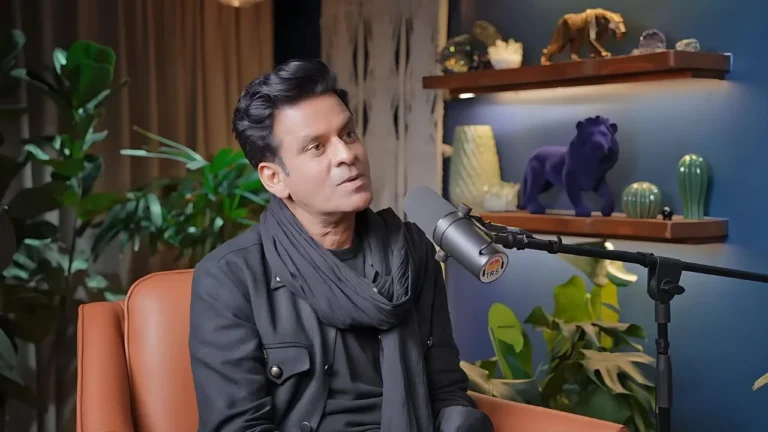A Dance with History: Aditi Rao Hydari’s Bold Step in Heeramandi

Bollywood, with its rich tapestry of songs and dance, continues to mesmerize audiences worldwide. Among the most enchanting elements within this cinematic wonderland is the art of the mujra, Heeramandi Aditi Rao Hydari First Mujra Was a Daunting Experience a classical dance form that has enthralled viewers for centuries. Recently, actress Aditi Rao Hydari made waves with her portrayal in the Netflix series “Heeramandi”, where her first mujra performance became a focal point, sparking conversations around its cultural significance and historical roots.
The Allure of Mujra in Bollywood
Mujra, a dance form that intertwines grace and storytelling, has held a significant place in Indian cinema. Originating in the Mughal courts, it was traditionally performed by courtesans and has evolved over time to become a staple in Bollywood’s dance repertoire. This form is not just about dance; it’s an expression of emotions, a narrative in movement that captivates audiences.

A Historical Perspective
The roots of mujra can be traced back to the Mughal era, where it served as entertainment for royalty. It was a form of expression and elegance, often recounting tales of love and longing. Over time, it found its way into Bollywood, adding depth and authenticity to films set in historical and cultural contexts. From classic films like “Pakeezah” to modern portrayals, mujra has continued to enchant audiences with its blend of music, poetry, and dance.
Mujra’s Cinematic Evolution
In Bollywood, mujra has evolved from being a mere performance to a powerful tool of storytelling. Directors have used it to explore complex themes of love, betrayal, and societal norms. The dance form’s intricate footwork, expressive gestures, and emotive expressions are employed to convey narratives that resonate with viewers, adding layers to character development and plot progression.
Cultural Significance
Mujra is more than just a dance form; it is a cultural artifact that reflects the socio-political dynamics of its time. Each performance is a window into the past, offering insights into the lives of women in historical contexts. For audiences, it is an opportunity to engage with India’s rich cultural heritage, understanding the nuances of its art forms.
Aditi Rao Hydari’s Bold Venture in “Heeramandi”
In the Netflix series “Heeramandi”, Aditi Rao Hydari stepped into the shoes of a mujra dancer, a role that demanded not only physical prowess but also a deep emotional connection with the character. Her portrayal brought to life the challenges and triumphs of women in a bygone era, offering viewers a glimpse into their world.
Preparation and Challenges
For Aditi, preparing for the role was an intense process. She immersed herself in the history and techniques of mujra, training under expert choreographers to master its nuances. The dance required precision and emotional depth, challenging her both physically and mentally. Her dedication to authenticity was evident in every movement, capturing the elegance and complexity of mujra.
First Mujra Experience
Aditi’s first mujra performance on screen was a blend of anticipation and apprehension. The daunting task was to do justice to a revered art form while making it relatable to contemporary audiences. Her performance was a testament to her commitment, as she seamlessly merged traditional elements with modern sensibilities, creating a captivating portrayal that resonated with viewers.
Reception and Impact
The reception to Aditi’s mujra in “Heeramandi” was overwhelmingly positive. Critics and audiences alike praised her for breathing life into a complex character, highlighting her ability to convey profound emotions through dance. Her performance sparked dialogues on the representation of historical art forms in contemporary cinema, shedding light on the importance of preserving cultural heritage.
“Heeramandi” and Its Significance
“Heeramandi” is not just another series; it’s a cultural milestone. It brings to the forefront untold stories from the past, emphasizing the resilience and strength of women in patriarchal societies. The series serves as a bridge between history and modernity, allowing viewers to explore themes of identity, empowerment, and tradition.
A Window into the Past
Set against the backdrop of India’s partition era, “Heeramandi” offers a narrative that is both engaging and educational. It provides a glimpse into the lives of women in the red-light district, exploring their struggles, aspirations, and the societal norms that shaped their destinies. The series is a testament to the power of storytelling, using history as a canvas to paint vivid portraits of human experiences.
Women at the Forefront
“Heeramandi” places women at the heart of its narrative, showcasing their strength and resilience in the face of adversity. Through compelling characters, the series highlights the complexities of womanhood, exploring themes of autonomy, love, and sacrifice. It is a celebration of women who defied societal expectations, carving out paths for themselves in a world that sought to confine them.
Cultural and Historical Exploration
The series is a rich tapestry of cultural and historical elements, weaving together traditions, music, and dance to create an immersive experience. It invites viewers to appreciate the richness of India’s heritage, encouraging them to reflect on the lessons of the past and their relevance in today’s world. “Heeramandi” is an exploration of history through the lens of entertainment, offering insights into the cultural dynamics of its time.
The Role of Dance in Cultural Narratives
Dance, as portrayed in “Heeramandi”, is a powerful narrative tool. It transcends language, conveying emotions and stories that resonate across cultures. In the series, dance becomes a medium of expression, allowing characters to communicate their inner worlds and connect with audiences on a visceral level.
Dance as Storytelling
In “Heeramandi”, dance is woven into the fabric of storytelling, each performance laden with symbolism and emotion. The choreography is meticulously crafted to reflect character arcs and plot developments, enhancing the narrative’s depth and impact. Through dance, the series explores universal themes of love, loss, and redemption, connecting with viewers on an emotional level.
The Emotional Resonance of Mujra
Mujra, with its emotive expressions and graceful movements, is a dance form that speaks directly to the heart. In “Heeramandi”, it serves as a vessel for character development, revealing the inner struggles and desires of the women it portrays. Aditi’s performances capture this emotional intensity, using dance as a means to explore the complexities of her character’s world.

Preserving Tradition through Innovation
“Heeramandi” demonstrates the power of innovation in preserving tradition. By reimagining mujra for a modern audience, the series ensures that this cultural heritage remains relevant and appreciated. It highlights the importance of adapting traditional art forms to contemporary contexts, ensuring their survival in an ever-evolving world.
Conclusion
Aditi Rao Hydari’s portrayal in “Heeramandi” is more than just a performance; it’s a tribute to the resilience of women and the enduring power of cultural heritage. Her first mujra experience, though daunting, was a testament to her dedication and talent, capturing the essence of a dance form that has captivated generations.
For Bollywood enthusiasts, cultural historians, and film buffs, “Heeramandi” offers a rich tapestry of history and art, inviting viewers to explore the depths of India’s cultural legacy. It serves as a reminder of the importance of preserving and celebrating the stories that shape our world.
As we continue to explore the intersections of history and modernity, “Heeramandi” stands as a beacon of cultural exploration, inspiring future generations to appreciate and cherish the art forms that define us. For those eager to learn more, engaging with the series offers a unique opportunity to connect with a world of tradition, storytelling, and artistic expression.






